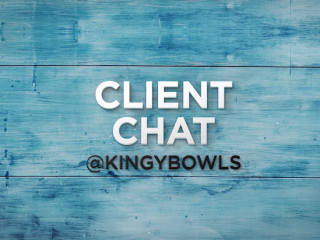We’ve collated the top seven things you should consider when deciding on Digital Menu Boards.
1. Content and Design
One of the most important factors in any Digital Menu Board setup is having engaging content. Because, your customer doesn’t care about your screens or what’s running them; they care about what they are seeing and how it relates to them. Having images and video of your menu items can instantly sway a customer’s decision and allows you to influence their buying habits. Creating Digital Menu Boards that show your menu items rotating, will increase the chance of a particular item being purchased. It is important to factor in some form of ongoing content creation to get the most out of your investment. Whether you can do this in-house or outsource it to a professional digital signage design company, make sure you have considered how this content will be created.
2. Purpose of Screens
You will need to determine the purpose of your screens. Digital Menu Boards are one type of digital solution where the content needs to remain on screen at all times. Your customers need to be able to look and choose from your menu items. They won’t want the menu disappearing to display your “ad” or promo, or a full-screen takeover. Identifying which screens are dedicated to your menu and pricing, and which will be promotional is very important. We often recommend having one or two screens dedicated to showing promotions. Either at the beginning of the ordering process to influence their initial decision, or at the end / point of sale to influence upsell and add-on items.
3. Cost
As with most things in life, having a strategy will ensure you get the best outcome. Putting together a detailed content strategy for your menu boards will help you understand your ongoing content requirements and allow you to properly budget the most effective promotions. This strategy is different for every business, and needs to be tailored to your menu items, your customers and your opening hours.
Often the largest hurdle is the investment needed to properly install Digital Menu Boards. A menu board setup can set you back between $3k and $25k depending on the size and quantity of screens. If you are currently printing your menus and promotions, there can be a substantial initial investment to get up and running. This can be assisted by financing or rental agreements (such as with SilverChef), but it is important to look at the investment over the life of your store. Simple ROI calculations can determine whether they are right for you based on your product sales, or simply assessing if the convenience and appeal of Digital Menu Boards with high quality content is enough.
4. Commercial Grade
It is easy to think that buying a screen from a retail store will get the job done (such as JB HIFI), but as soon as those screens are installed in a commercial environment their warranty is void. While the cost may be slightly cheaper than a commercial grade equivalent, you ultimately get what you pay for. You wouldn’t think of putting a consumer grade oven in your commercial kitchen, so you should treat your menu boards the same.
A high-quality commercial grade screen is designed to run in business environments. Unlike consumer grade screens; they come with a 3-year warranty, are designed to be run in portrait or landscape orientation, are built to run either 16 hours or 24 hours a day, have automatic on and off capability and much more.
Don’t get caught putting a cheaper screen in your business unless you are willing to replace it regularly.
5. Number and Size of Screens
The correct number of screens will depend on the available space in your shop and how many menu items you have. There is no correct answer, and it will often come down to aesthetics. If two screens fit your space well, then go with it. You can always choose larger or smaller screens, but keep in mind the viewing distance of your customers, because the smaller the screen the smaller the text will be.
The more screens you have the easier it is to create amazing content that includes images and video of your products. If you are left with one screen to fit your entire menu, you will have minimal space for visuals, engaging videos and animations.
6. Placement
Deciding on where to position your screens can be as simple as replacing your current menu boards. Other decisions include where to put your promo screens, the direction of your customer ordering journey, and whether screens could be placed in other locations to generate interest and encourage sales. The key for placement is that your screens are visible and can be read by your customers easily. Don’t place them too far away or in awkward positions which have low foot traffic.
7. Dayparting of Content
Digital Menu Boards allow you to schedule content based on time of day, day of the week, or to coincide with special events and dates. This gives you an incredible amount of power to promote or upsell and display relevant information to your customers. Whether it is displaying your breakfast options in the morning and having it automatically swap to your lunch/dinner menus later in the day or rotating your Mother’s Day specials and event in the weeks leading up to the date to encourage attendance and sales. Don’t treat them like a printed menu, it is important to think about how you could change your content throughout the day to best utilise your investment and, better yet, look amazing to your audience!





1 Comment